by STEVEN HATCHER and RYAN JORDAN
Introduction
In this guide, we’ll explore the primary categories of footwear for backpacking and hiking, including minimalist footwear, examining their unique benefits, limitations, and use cases. From minimalist hiking sandals to rugged mountain boots, we’ll dive into the design features and performance benefits that define each type, as well as the nuances of construction.

Learn More: Online Masterclass
Enroll in the Backpacking Light Masterclass, Minimalist Footwear for Multi-Day Backpacking.
Table of Contents • Note: some sections may only be available to Premium or Unlimited Members.
- Introduction
- Learn More: Online Masterclass
- Market Context
- Criteria Summary
- The Shoes
- Xero Z-Trail EV
- Bedrock Cairn Evo 3D PRO
- Xero Mesa Trail II
- Vivobarefoot Primus Trail II FG
- Altra Lone Peak 8
- Brooks Cascadia 18 Trail-Running Shoes
- Topo Athletic Ultraventure 4 Trail-Running Shoes
- Inov8 Trailfly
- Hoka Challenger 7
- Scarpa Ribelle Run XT
- La Sportiva Ultra Raptor II GTX Trail-Running Shoes
- Inov8 Roclite Pro G 400 GTX V2
- Scarpa Moraine WP
- Merrell Moab 3
- Oboz Sawtooth X Low
- La Sportiva Jackal II Boa
- Altra Lone Peak ALL- WTHR Mid 2
- Altra Olympus 6 Hike Mid GTX
- Hoka Speedgoat 6 Mid GTX
- Hoka Anacapa 2 Mid GTX
- Scarpa Rapid
- La Sportiva TX 4 EVO
- Minimizing Blisters
- Snow Traction
Market Context
The outdoor recreation footwear market has evolved from a reliance on traditional hiking boots to a broader range of options designed for diverse environments and activities. This summary examines key footwear categories within a backpacking context, detailing their general uses, benefits, and limitations. Specifically, we’ll distinguish footwear into the following categories:
- hiking sandals
- trail running shoes
- minimalist hiking shoes
- non-minimalist hiking shoes
- approach shoes
- hiking boots
- mountain boots
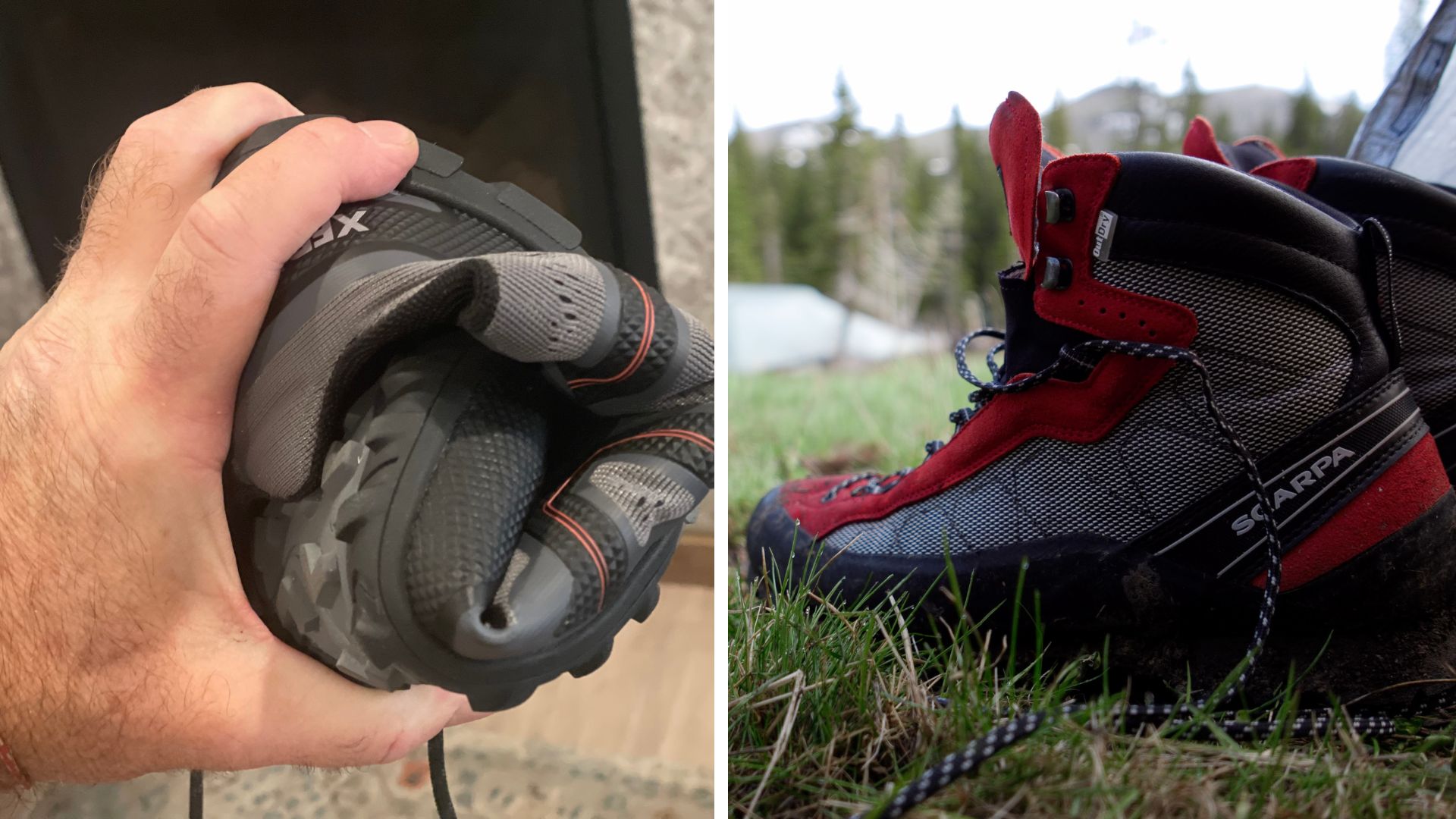
Hiking Sandals
Hiking sandals offer lightweight flexibility and are ideal for environments where breathability and packability are prioritized. They feature robust outsoles for rocky terrain and zero-drop midsoles (4–10 mm), which encourage a neutral foot posture. However, their open design exposes feet to the elements, making them unsuitable for extended trips in cold environments or very rugged terrain. These sandals appeal to lightweight backpackers, climbers, and water sports enthusiasts but lack the support and protection required for rigorous backpacking.
- Use case: casual hikes, water crossings, climbing approaches.
Trail Running Shoes
Trail running shoes have gained popularity among backpackers for their lightweight design and versatility. With stack heights of 20–30 mm, they provide cushioning and protection from rough terrain. Aggressive treads, lugs, and optional rock plates enhance traction and defense. Wider toe boxes (100 mm+) and low heel-to-toe drops (4–8 mm) support a natural stride. While trail runners feel familiar to those accustomed to road running shoes, they offer less protection and structure than heavy-duty hiking boots, requiring an adjustment period for some users.
- Use case: cushioned comfort for beginners who want to exit boots or experienced hikers seeking more speed and agility.
Minimalist Hiking Shoes
Minimalist hiking shoes combine the thin, flexible midsoles of hiking sandals with the added coverage of a protective upper. Designed to offer a closer-to-ground feel, minimalist hiking shoes prioritize flexibility and natural foot mechanics. These shoes cater to hikers seeking a lightweight, natural experience with more protection than sandals. However, minimalist hiking shoes typically lack the durability and support of traditional footwear, making them better suited for moderate hikes and lighter loads.
- Use case: for hikers wanting to maintain natural biomechanics, and are willing to invest the time for their bodies to adapt.

Non-Minimalist Hiking Shoes
Non-minimalist hiking shoes offer more robust protection and stability than their minimalist counterparts. Constructed from durable materials like nubuck leather and polyurethane, they provide enhanced durability at the cost of added weight. A snug fit can reduce blistering for some users by minimizing friction, but improper sizing may have the opposite effect. While less likely to feature wide toe boxes or zero-drop designs, these shoes strike a balance between comfort and sturdiness, making them ideal for backpackers who need lightweight yet secure footwear without the bulk of boots.
- Use case: for hikers wanting more durability and protection for rugged terrain.
Approach Shoes
Approach shoes are a hybrid option designed for both hiking and climbing. Sticky rubber soles provide exceptional grip on rocky or uneven terrain, a feature favored by climbers and scramblers. While not suited for extended backpacking or icy conditions, they excel in scrambling and warm-weather adventures. Compared to standard hiking shoes, approach shoes include climbing-specific features, such as sticky toe zones, making them ideal for rocky trails and technical approaches.
- Use case: for desert and mountain scrambling requiring stiff footbeds, climbing edges, and durable uppers for crack jamming.

Hiking Boots
Hiking boots have been used by outdoor enthusiasts who prioritize durability, stability, and protection. Taller uppers provide ankle support and shield against trail hazards, while heavy-duty materials enhance longevity. Though heavier than other options, hiking boots offer time-tested reliability for rugged terrain and challenging conditions. High-cut versions provide extra support, while low-cut versions cater to hikers seeking more flexibility. These boots are best for those who value protection over lightweight design.
- Use case: the traditional option, offering high durability and sole longevity.

Mountain Boots
Mountain boots occupy the extreme end of the footwear spectrum, designed for high-altitude and technical climbing. Incorporating waterproofing, insulation, and crampon compatibility, they are built for icy and snowy environments. Heavy and expensive, mountain boots prioritize safety and durability over comfort, making them indispensable for mountaineering but less suitable for general backpacking. Their specialized design ensures stability and protection in demanding conditions.
- Use case: alpine environments requiring crampons; glacier, steep snow and ice climbing.
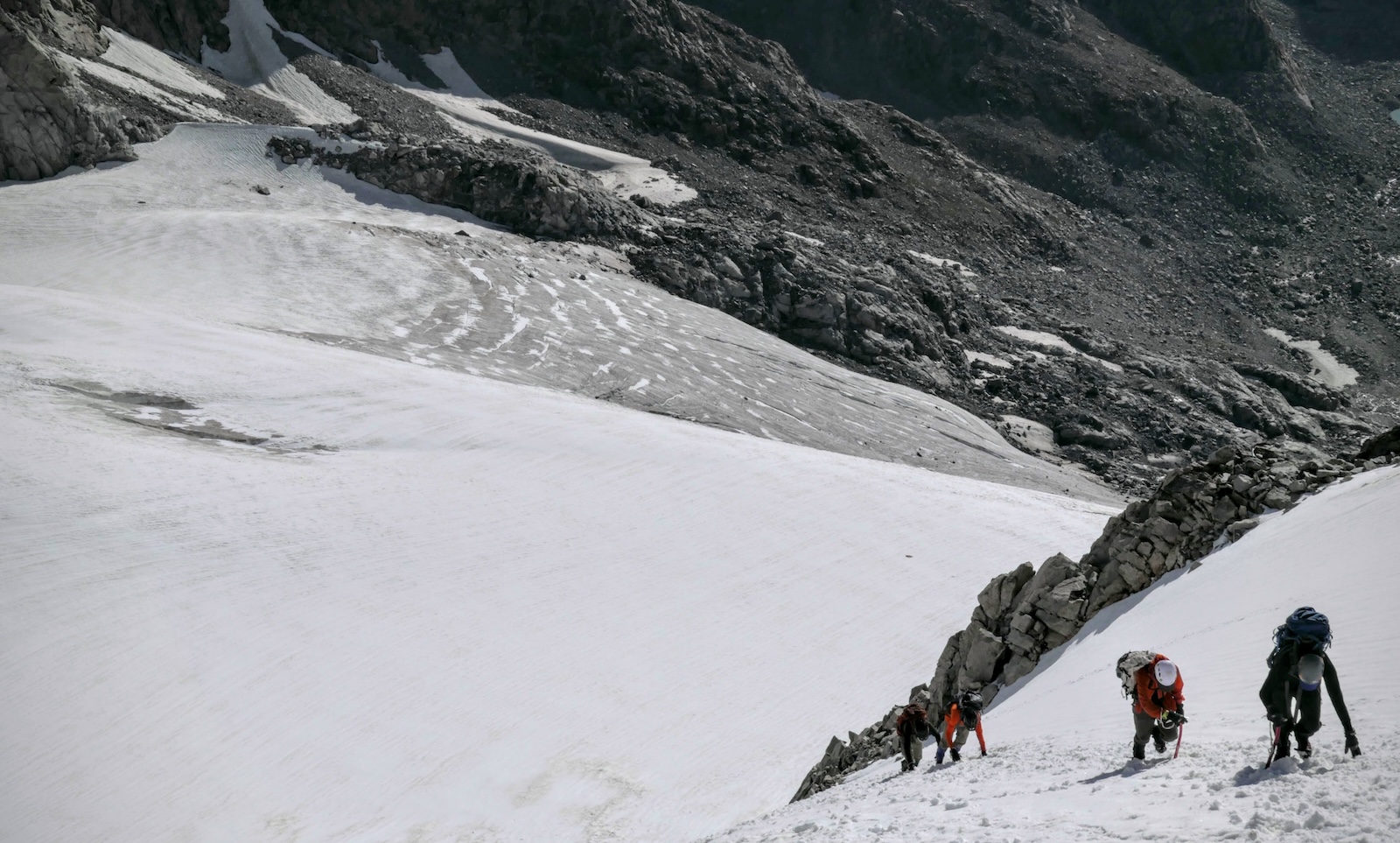
Criteria Summary
Stack Height
Stack height measures the amount of material between the foot and ground, primarily contributed by midsole cushioning, though outsoles, rock plates, and insoles can add to it. Higher stack heights provide additional cushioning and impact absorption but reduce ground feel, a feature often prioritized in minimalist footwear for improved proprioception. Minimalist footwear favors lower stack heights to enhance ground contact and proprioception, though this may reduce overall foot protection.
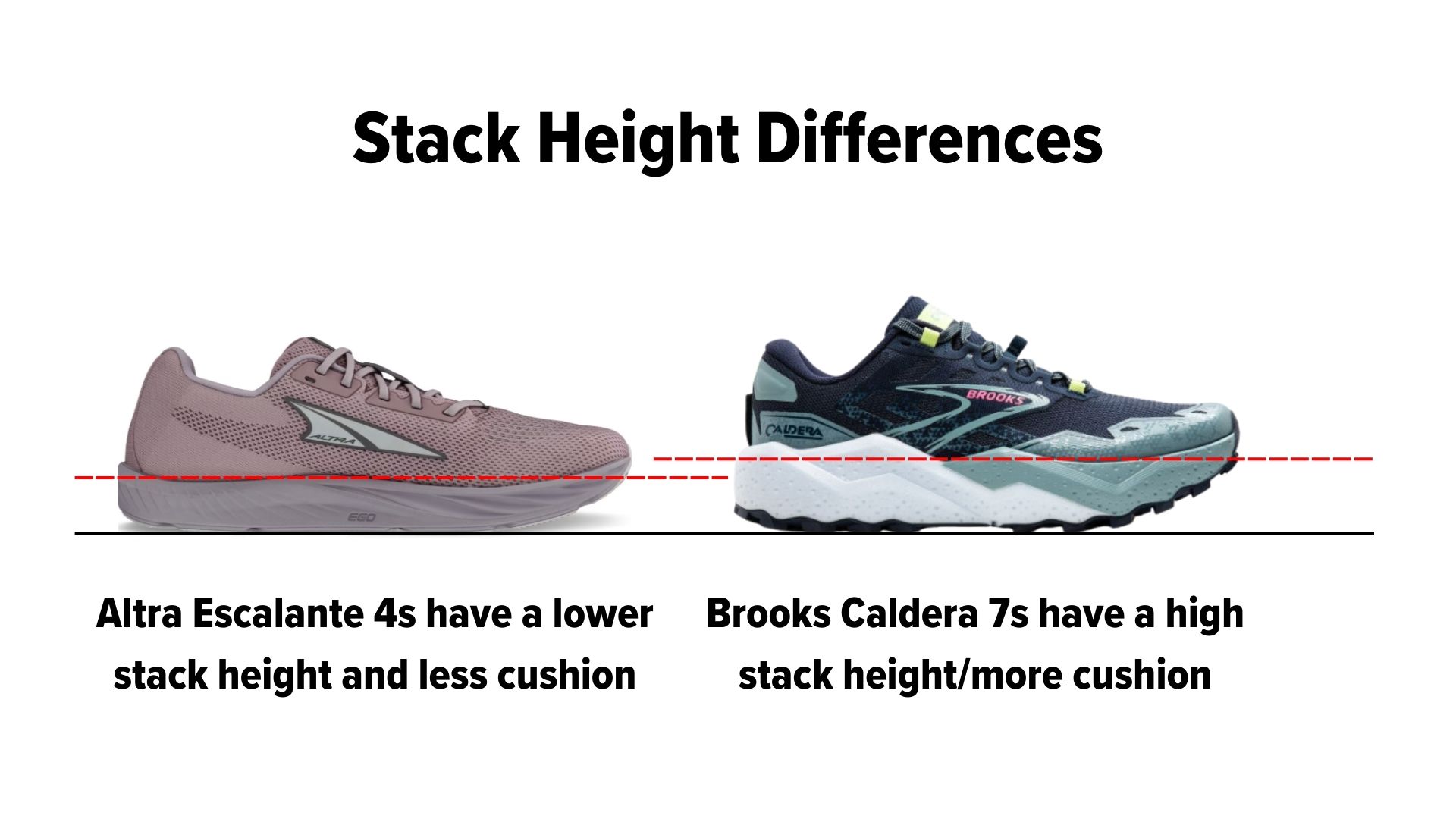
Drop Height
The “drop” of a shoe refers to the difference between the amount of cushioning at the heel of the shoe versus the toe of the shoe. A high drop midsole can be used to protect the heel and lower body joints from the high impacts of long running strides, and lower or zero drop midsole encourages a more upright posture and midfoot strike, which some users associate with natural movement patterns. Minimalist shoes will generally feature these low or zero drops as they tend to prioritize natural movement and alignment.

Toe Box Width
The toe box is the front part of a shoe where the toes rest, with traditional designs often tapering to a point, which can restrict movement and lead to foot issues. Wider toe boxes, common in minimalist footwear, allow for natural toe splay, allowing natural toe splay, which may improve balance and comfort on uneven terrain. However, a tighter toe box can offer benefits like improved control, reduced foot movement, and blister prevention in certain activities.

Upper Material
A shoe’s upper material can vary widely, with minimalist outdoor shoes often using woven mesh for its durability, breathability, and shape retention, which helps keep feet cool and dry. Mesh is also versatile, allowing for protective features like toe caps and heel supports. Leather uppers offer more robust protection and durability but require a longer break-in period and may stretch over time; both materials can be treated for water resistance.
Upper Stability
Shoe upper stability features are designed to keep the foot securely in position, often using heel cups, reinforced overlays, or polyurethane additions that prevent foot movement inside the shoe. These features are common in more rugged minimalist footwear, particularly for hikers carrying heavy packs, where additional foot security can benefit hikers carrying heavy loads or navigating rugged terrain. Midfoot shanks, often placed on the shoe’s outer edge, provide extra rigidity and stability, improving balance on uneven terrain and reducing the risk of ankle rolling.
Upper Height
Upper height refers to how high the shoe extends up the leg, with most minimalist options favoring low cuts to maximize ankle flexibility and range of motion. Some brands offer mid-height minimalist shoes, which provide more ankle protection, keep out dirt and debris, and reduce water entry. However, true stability is determined more by the midsole’s structure—its rigidity or plushness controls how well the shoe resists bending or twisting on uneven surfaces, which minimizes ankle rolling more effectively than upper height alone.
Cushioning Level
Cushioning level refers to the midsole thickness, impacting comfort, protection, and ground feel. Higher cushioning increases underfoot protection and impact absorption, though it may reduce ground feel and tactile feedback. Minimalist shoes aim to balance cushioning with flexibility, providing enough protection without sacrificing natural foot movement and ground responsiveness.
Midsole Construction
Midsole construction refers to the type and quality of cushioning in a shoe, with materials like EVA foam often used in minimalist shoes for lightweight comfort and flexibility. Unlike traditional hiking boots that may use rigid polyurethane for added stability, minimalist footwear prioritizes a softer, more flexible feel, sometimes blending foams of different densities for targeted protection. Stability features like shanks can be embedded within the midsole to enhance support, helping prevent ankle rolling and improve balance without compromising comfort.
Outsole Style
Outsole style refers to the tread design, material, and lug depth on a shoe’s sole, affecting grip and durability across surfaces. Minimalist shoes often have thin, flexible outsoles for better ground feel, with varied treads suited to specific terrains: mud-focused outsoles have deep, spaced lugs to shed debris, while mixed-terrain and all-terrain outsoles use smaller, multi-directional lugs for stability and versatility. The choice of outsole style directly impacts traction, adapting the shoe to specific environments and enhancing performance on various surfaces.
Rock Plate
Rock plates are thin, flexible inserts located near the forefoot in some minimalist shoes, designed to shield the foot from sharp rocks, roots, and other hazards on rough terrain. Rock plates distribute pressure from sharp objects, offering underfoot protection while maintaining flexibility and minimizing additional weight. Strategically integrated into the midsole, rock plates help prevent discomfort from sharp objects while preserving the shoe’s natural movement and responsiveness, making them a practical feature for those seeking both protection and ground feel in challenging outdoor environments.
Longitudinal Flexibility
Longitudinal flexibility refers to a shoe’s ability to bend along the length of the foot, allowing natural movement through the stride, which supports comfort and agility in minimalist shoes. High longitudinal flexibility allows the shoe to move closely with the foot on varied terrain, reducing strain and enhancing ground feel. In contrast, shoes with low longitudinal flexibility feel stiffer and can restrict natural foot motion, leading to a sense of restriction or discomfort, particularly on uneven surfaces.
Torsional Flexibility
Torsional flexibility is a shoe’s ability to twist along its length, allowing the foot to adapt to uneven terrain. High torsional flexibility lets the shoe follow the natural rotation of the foot, facilitating natural foot movement, which may improve comfort and adaptability on rugged surfaces. In contrast, shoes with low torsional flexibility feel rigid and may restrict this natural movement, which can lead to discomfort or a feeling of instability on uneven ground as the foot is less able to adjust to variations in the terrain.
Water Resistance
No shoe with a tongue can be fully waterproof, as the gusseted material connecting the tongue can’t be completely sealed. This means that water resistance in most shoes only extends up to the first lace hole, limiting their effectiveness in deep water. As a result, water-resistant minimalist shoes are designed to manage shallow puddles, small streams, or wet foliage but are less effective in deeper water or sustained exposure.
Stability / Arch Support
In minimalist shoes, arch support can slightly stabilize the midfoot, offering a touch of structure for those who need support over extended distances. However, shoes without arch support enable unrestricted foot movement, which activates the foot’s natural arch muscles and promotes a more adaptive, dynamic stride. This freedom can feel less stable at first for those accustomed to traditional footwear, yet over time, it can strengthen the arch and enhance foot flexibility for a more natural feel on varied terrain.
The Shoes
We included a few styles from each category, to provide the user with representative examples of lightweight footwear across the spectrum of weight, support, stability, protection, and durability.
Xero Z-Trail EV
The Xero Shoes Z-Trail EV Sandals combine a 10mm high-performance sole for durable protection with a minimalist 215g weight (men’s size 9), delivering lightweight versatility for backcountry travel.
Summary:
- Benefits: low weight, high flexibility allows for natural foot motion.
- Limitations: limited protection and support, no midsole arch, less suitable for technical trails, slippery footbed when wet, thin sole limits cushioning on rough terrain, lacing system requires frequent adjustment.
- Use case: for those who prioritize natural movement and low weight in their hiking footwear.
Bedrock Cairn Evo 3D PRO
The Bedrock Sandals Cairn 3D PRO Sandals feature a 14mm Vibram sole for rugged traction and a secure strap system, offering a precise fit and reliable performance for hikers and backpackers in diverse terrain.
Summary:
- Benefits: durable outsoles for slip resistance and longevity, some midsole arch support.
- Limitations: somewhat heavier than so-called “barefoot” or “minimalist” sandals, break-in period required to relax out-of-the-box stiffness, thick sole limits ground feel, multiple adjustment straps are time-consuming to fine tune, heel strap closure accumulates debris.
- Use case: for those who want a sandal with a little more structure, support, and traction.
Xero Mesa Trail II
The Xero Shoes Mesa Trail II features a 5.5mm FeelTrue sole with 3.5mm lugs for ground feedback and traction, paired with a lightweight 218g design (men's size 9) to support trail runners and hikers seeking minimalist performance.
Summary:
- Benefits: low weight, high flexibility, fairly durable upper for a minimalist/barefoot style shoe.
- Limitations: minimal structure, support, and cushioning, shallow lugs limit traction on mud, wide toe box and high volume limits application on technical terrain.
- Use case: for those who want enough traction for trail hiking with a barefoot-style feel.
Vivobarefoot Primus Trail II FG
Summary:
- Benefits: elastic quick-lace system, outsole offers good grip and durability on rocky terrain.
- Limitations: minimal support and protection, stiff outsole limits ground feel, heavy, poor traction (short lugs) on loose and muddy terrain, low-volume upper, narrow midfoot, lacing system doesn’t remain secure.
- Use case: for those who want enough traction for trail hiking on firm ground in a shoe with a barefoot feel.
Altra Lone Peak 8
The Altra Lone Peak 8 Trail-Running Shoes feature a zero-drop platform and 25mm Altra EGO midsole for balanced cushioning, combined with MaxTrac outsoles for multi-surface grip, designed to support trail runners and hikers in varied terrain.
Summary:
- Benefits: wide toe box, zero drop, cushioned midsole.
- Limitations: forefoot volume and less-structured upper offer limited technical stability while traversing steep terrain, known upper durability issues amongst thru-hikers, poor traction on wet rock.
- Use case: trail hiking for long hours and long distances when cushioning is needed for some fatigue insurance.
Brooks Cascadia 18 Trail-Running Shoes
The Brooks Cascadia 18 Trail-Running Shoes feature a 20mm midsole with DNA LOFT v2 cushioning and an updated TrailTack outsole for stability and grip, providing versatile performance for hikers and trail runners on uneven terrain.
Summary:
- Benefits: cushioned heel and 8 mm drop offers a road-shoe-like feel for fast hikers.
- Limitations: narrow toe box, drop is a little on the high side to provide barefoot-style physiological benefits, midsole lacks soft cushion feel, notable lack of durability in upper mesh and heel collar.
- Use case: for those wanting to make a gradual transition away from traditional high-cushion, high-drop running shoes.
Topo Athletic Ultraventure 4 Trail-Running Shoes
The Topo Athletic Ultraventure 4 features a 30mm ZipFoam midsole for cushioning and a Vibram XS Trek EVO outsole for traction, providing stable and responsive performance for hikers and backpackers on long-distance backcountry routes.
Summary:
- Benefits: low drop, moderate cushion, wide-ish toe box.
- Limitations: limited underfoot rock protection, loose midfoot fit.
- Use case: trail hiking for long hours and long distances when cushioning is needed for some fatigue insurance.
Inov8 Trailfly
The Inov8 Trailfly features a 24mm PowerFlow+ midsole for responsive cushioning and a durable Graphene-Grip outsole for superior traction, designed to deliver stable performance on rugged, technical trails for hikers and backpackers.
Summary:
- Benefits: grippy sole on wet rock, light weight considering good long term midsole and outsole durability.
- Limitations: runs small, tight midfoot area, minimal cushioning, air mesh suffers durability in upper, shallow lugs limit mud / snow traction.
- Use case: long distance hiking on hardpacked trails.
Hoka Challenger 7
The HOKA Challenger 7 trail-running shoes feature a 31mm heel and 26mm forefoot stack height with a 9mm drop, providing a cushioned, stable platform for mixed terrain. The 3.5mm lugs deliver traction on moderate trails and roads, making them suitable for longer hikes and light trail running
Summary:
- Benefits: plush feel (high stack height), rugged all-terrain outsole with good lug traction on hardpacked surfaces.
- Limitations: narrow toe box, outsole lugs wear quickly, high stack limits ground feel and responsiveness and is borderline unsafe on steep, off-trail terrain, rocker design limits the feeling of a stable, supported heel.
- Use case: versatility for hardpacked (dry) trails, gravel roads, and pavement.
Scarpa Ribelle Run XT
The Scarpa Ribelle Run XT is designed for rugged, variable terrain, featuring a dynamic and responsive midsole combined with a durable, high-traction outsole. The shoe’s precision fit and lightweight construction support aggressive trail runners and backcountry travelers needing both stability and flexibility over challenging landscapes.
Summary:
- Benefits: underfoot protection, supportive upper, technical performance on steep terrain, durable sole and rand, good outsole traction in wet, mud, and snow.
- Limitations: narrower fit than other minimalist designs, stiffer sole limits barefoot feel, heavier than the average trail running shoe, limited upper breathability, moderate break-in period.
- Use case: technical, off-trail terrain when durability and support of an approach shoe isn’t needed, but you still need scree and scrambling performance.
La Sportiva Ultra Raptor II GTX Trail-Running Shoes
The La Sportiva Ultra Raptor II GTX Trail-Running Shoes feature a Gore-Tex waterproof membrane and a FriXion AT outsole with 6mm lugs for traction, providing stability and protection on technical trails. The 29mm heel and 21mm forefoot stack height offer cushioning for long-distance.
Summary:
- Benefits: off-trail technical performance, aggressive grip on wet rock, secure fit and lacing (TPU harness), rock guard, good shock absorption.
- Limitations: 9 mm drop may be too much for some, narrow fit, somewhat stiff, moderate break-in period, poor breathability.
- Use case: semi-technical terrain where a mix of on- and off-trail comfort is useful but scree and climbing performance isn’t necessary.
Inov8 Roclite Pro G 400 GTX V2
The Inov-8 Roclite Pro G 400 GTX V2 boots combine a durable ripstop upper with a Gore-Tex membrane for waterproofing and feature a graphene-infused outsole with 6mm lugs for grip and longevity, making them suitable for rugged terrain and long-distance hikes.
Summary:
- Benefits: hiking boot style on a trail running chassis, durable and protective upper, rock plate, very good outsole grip on wet terrain.
- Limitations: 9 mm drop is a little high for those seeking a minimalist-style experience, high pricing and limited availability in the US, limited breathability, snug fit.
- Use case: for those prioritizing foot protection with a taller upper without sacrificing a trail running shoe feel.
Scarpa Moraine WP
The Scarpa Moraine WP hiking shoes feature a combination of suede and mesh uppers for durability and breathability, along with a GORE-TEX® lining for waterproof protection, making them versatile for various trail conditions.
Summary:
- Benefits: durable waterproof leather upper, rearfoot and heel stability, integrated RECCO reflector for SAR assistance.
- Limitations: runs small (size up), fairly stiff for casual use or fast hiking, stiff ankle cuff requires a break-in period, tread pattern accumulates mud (narrow lug spacing).
- Use case: for those wanting protection or support in a low-profile hiking shoe.
Merrell Moab 3
These versatile hiking shoes are built with a combination of suede leather and mesh uppers, offering durability and breathability, making them well-suited for a variety of trail conditions
Summary:
- Benefits: durable leather upper, durable outsole, relatively cushioned for a shoe with this level of durability.
- Limitations: heavy, stiff, limited traction on wet rock, poor breathability.
- Use case: hikers who want a supportive, durable shoe that doesn’t break the bank.
Oboz Sawtooth X Low
The Oboz Sawtooth X Low Hiking Shoes feature a nubuck leather and Cordura upper for durability, a nylon shank for off-camber stability, and the O FIT insole for foot support, making them suitable for varied terrain during backcountry hikes.
Summary:
- Benefits: Durable construction, secure fit, arch support, good traction on varied terrain, moderately cushioned midsole.
- Limitations: Heavy, poor breathability, stiff, requires a break-in period.
- Use case: For hikers who prioritize durability, support, and protection on rugged trails with moderate loads.
La Sportiva Jackal II Boa
The La Sportiva Jackal II Boa trail-running shoes are designed for rugged terrain, featuring the BOA® Fit System for precise foot adjustment and EVA/Infinitoo™ PU midsoles that provide cushioning and stability. The shoes also include FriXion® XT 2.0 rubber with 3.5 mm lugs for reliable traction.
Summary:
- Benefits: Secure, adjustable lacing system, lightweight, breathable upper, high responsiveness and cushion, aggressive grip.
- Limitations: Narrow fit, moderate durability issues in the upper, limited traction on wet or muddy surfaces.
- Use case: For hikers seeking a secure, lightweight, cushioned shoe.
Altra Lone Peak ALL- WTHR Mid 2
The Altra Lone Peak ALL-WTHR Mid 2 Hiking Boots combine a waterproof eVent bootie with Altra’s signature wide toe box and TrailClaw lug pattern for traction, offering hikers a comfortable, all-weather option for varied terrain.
Summary:
- Benefits: Wide toe box, zero-drop, waterproof, lightweight for a mid-height boot, good cushioning.
- Limitations: Upper durability issues limits longevity, limited support and stability on technical terrain, poorly breathable.
- Use case: For hikers who want the Lone Peak feel with added ankle support and waterproofing for moderate trails and wet conditions.
Altra Olympus 6 Hike Mid GTX
The Altra Olympus 6 Hike Mid GTX Hiking Boots feature a Gore-Tex Invisible Fit upper for lightweight waterproofing and a Vibram Megagrip outsole designed for excellent traction on both wet and dry surfaces.
Summary:
- Benefits: Cushioned midsole, wide toe box, zero-drop design, waterproof, pretty good breathability for a waterproof shoe.
- Limitations: Heavier than other trail-running-shoe-style hiking boots, high stack height reduces ground feel and stability on technical terrain, traction is moderate on wet surfaces.
- Use case: For hikers prioritizing comfort and cushioning on long-distance trails with moderate wet weather exposure.
Hoka Speedgoat 6 Mid GTX
The HOKA Speedgoat 6 Mid GTX features a Gore-Tex waterproof upper and an aggressive Vibram Megagrip outsole with deep lugs for exceptional traction on rugged, technical terrain. Designed for comfort over long distances, it offers ample cushioning while providing stability and support for both trail runners and hikers in wet conditions.
Summary:
- Benefits: High cushion, secure fit, waterproof, aggressive traction, very good breathability for a waterproof shoe.
- Limitations: Narrow toe box, high stack height reduces stability on technical terrain, durability issues in the upper.
- Use case: For hikers who want a cushioned, waterproof boot for long-distance trails and moderate terrain.
Hoka Anacapa 2 Mid GTX
The HOKA Anacapa 2 Mid GTX Hiking Boots feature a waterproof nubuck leather upper combined with a GORE-TEX membrane for all-weather protection and a Vibram Megagrip outsole with 5mm lugs for reliable traction on varied terrain. Their cushioned EVA midsole and eco-friendly materials balance comfort, durability, and sustainability.
Summary:
- Benefits: Waterproof, plush cushioning, lightweight for a mid-height boot, good breathability for a waterproof shoe.
- Limitations: Wide forefoot fit may feel unstable for narrow-footed users, limited traction on wet or muddy terrain, limited durability of mesh upper.
- Use case: For hikers seeking lightweight comfort and weather protection on established hardpacked trails.
Scarpa Rapid
The Scarpa Rapid combines a Vibram Megagrip outsole with 5 mm lugs for traction on varied surfaces and a TPU-reinforced upper for durability and protection. Its Sock-Fit LW construction ensures a secure fit, making it a versatile option for hiking, light climbing, and technical trail use.
Summary:
- Benefits: Lightweight, breathable, approach shoe-inspired design with climbing zone outsole, good grip on rock and scree, responsive midsole.
- Limitations: Minimal cushioning, narrow fit, less versatile traction on soft or muddy terrain.
- Use case: For technical approaches and light scrambling.
La Sportiva TX 4 EVO
The La Sportiva TX4 EVO Approach Shoes feature a durable leather upper reinforced with recycled fabric for added sustainability and a Vibram® Megagrip™ outsole with Impact Brake System™ for stability and grip on technical terrain. These shoes are designed for versatility across hiking, scrambling, and light climbing scenarios.
Summary:
- Benefits: Extremely durable, good wet rock traction, supportive and protective upper, sticky outsole for scrambling and climbing.
- Limitations: Heavier than most approach shoes, stiff out of the box, requiring a break-in period, limited breathability in hot climates.
- Use case: For climbers and hikers needing a reliable shoe for technical approaches and scrambling – with plenty of durability.
Minimizing Blisters
Flexible footwear has a significant impact on minimizing blister formation because it minimizes the shear forces at the skin surface caused by feet moving inside the shoe. Flexible footwear lets your feet move with the shoe, minimizing friction at the shoe-sock-skin interface.
In No More Blisters, we outline five strategies for avoiding blisters:

Flexible Footwear, Wide Toebox
The Xero Mesa Trail is as close to a gold standard for flexible shoes with a wide toe box for trail hiking as any barefoot/minimalist shoe style available. Because it’s a barefoot style, it offers minimal padding, minimal structure, and high flexibility. They feel more like a slipper than a shoe. They are an interesting option for hikers who want to experiment with short hikes in barefoot-style shoes, or for very experienced trail hikers with strong biomechanical adaptation to hiking in minimalist footwear.
The Xero Shoes Mesa Trail II features a 5.5mm FeelTrue sole with 3.5mm lugs for ground feedback and traction, paired with a lightweight 218g design (men's size 9) to support trail runners and hikers seeking minimalist performance.
Toe Socks
Toe socks isolate each toe to minimize friction between the toes. Toe Socks are made by several companies, including Injinji, which offers toe socks for the outdoor and running communities.
Injinji toe socks minimize friction between the toes to help mitigate blister formation. A variety of styles can be worn as standalone socks or as liners in combination with conventional socks for hiking and backpacking.
Lubricant
In very warm temperatures, a lubricant decreases friction – essential for avoiding blisters in hot weather. In very wet conditions, the lubricant acts as a skin protectant, mitigating the effects of maceration, which causes dermal layer separation, blisters, and skin cracks. In very cold temperatures, a lubricant maintains hydration and pliability of the skin, which aids against the cracking and peeling of foot skin common among winter backcountry hikers and skiers.
For long-lasting protection, apply before wearing shoes to prevent blisters and raw skin from rubbing. The formula contains vitamins A and C to soften skin, restore dry feet, reduce inflammation, and is made with allergen-free, vegan ingredients safe for children and footwear.
Debris Gaiters
Debris gaiters are usually made with highly breathable, close-fitting (stretchy) woven fabrics like nylon, or knit fabrics like polyester. These fabrics are generally uncoated so they are comfortable in warm temperatures. Their purpose is to keep sand and dirt out of your shoes – keeping your feet cleaner and avoiding the grit that causes abrasion, cuts, and blistering while you are hiking.
On Etsy since 2013, ultrarunner Teresa makes gaiters, sunsleeves, and more from fun and stylish fabrics! Keep Sh!t out of your shoes!
Camp Soap & Booties
Allowing your feet (especially the skin) to recover in camp (overnight) is an essential part of maintaining foot health on multi-day trips. This includes keeping your feet clean with a pH-neutral soap that won’t dehyrate your skin, and keeping them warm throughout the night with an ultralight bootie (which helps maintain skin hydration).
The ultralight soap option. Use only what you need, no mess no fuss. For personal hygiene, dishwashing, and more. Plant-based ingredients. pH neutral.
Synthetic (Climashield APEX) booties available in stock and custom options.
If you're going to spend a few ounces on luxury, spend it on warm feet. These are the lightest booties available and make great sleep socks.
Snow Traction
In the old days (not the good old days), travel in icy winter landscapes required stiff boots and mountaineering crampons. With the advent of short-spiked traction crampons with flexible harnesses, we can now enjoy the winter season with flexible trail running shoes and other types of minimalist backpacking footwear.
Kahtoola Microspikes feature 12 spikes, 3/8” length, and a wide forefoot pattern for traction and security of variable icy and packed snowy terrain. An elastomer harness stays flexible in below zero (F) temperatures for security on flexible footwear. Durable chain links withstand repeated stress on steep terrain.



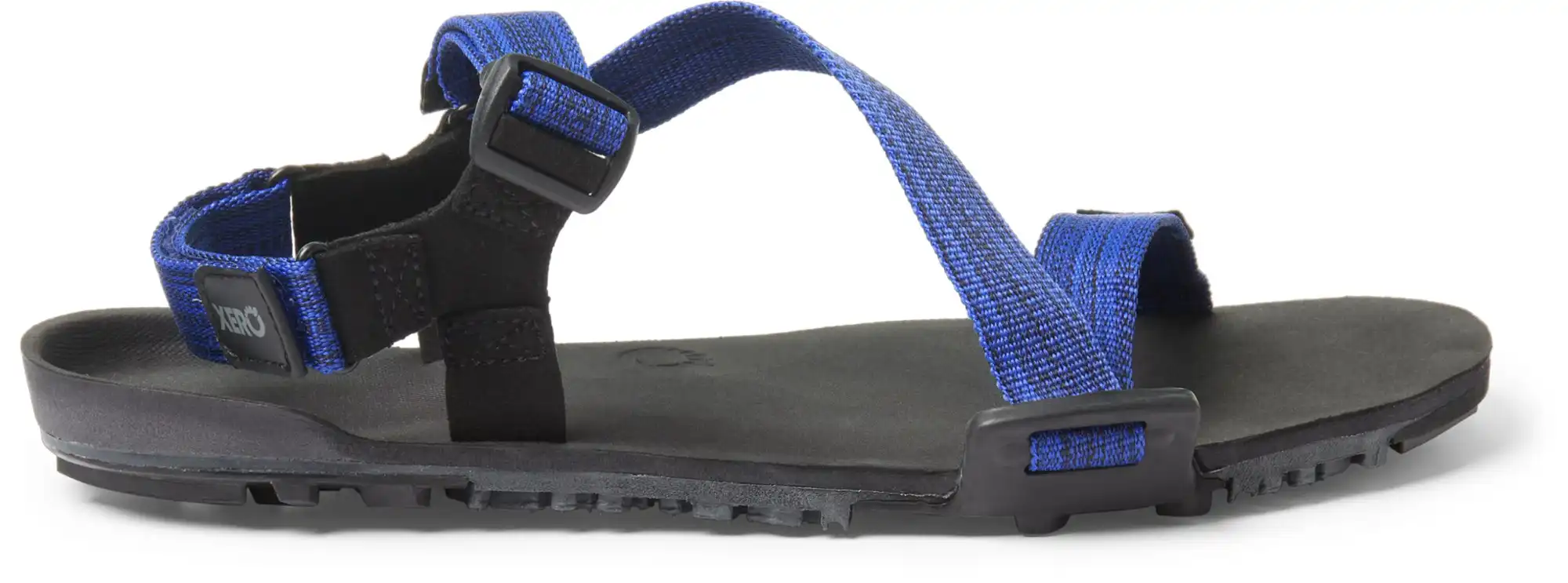
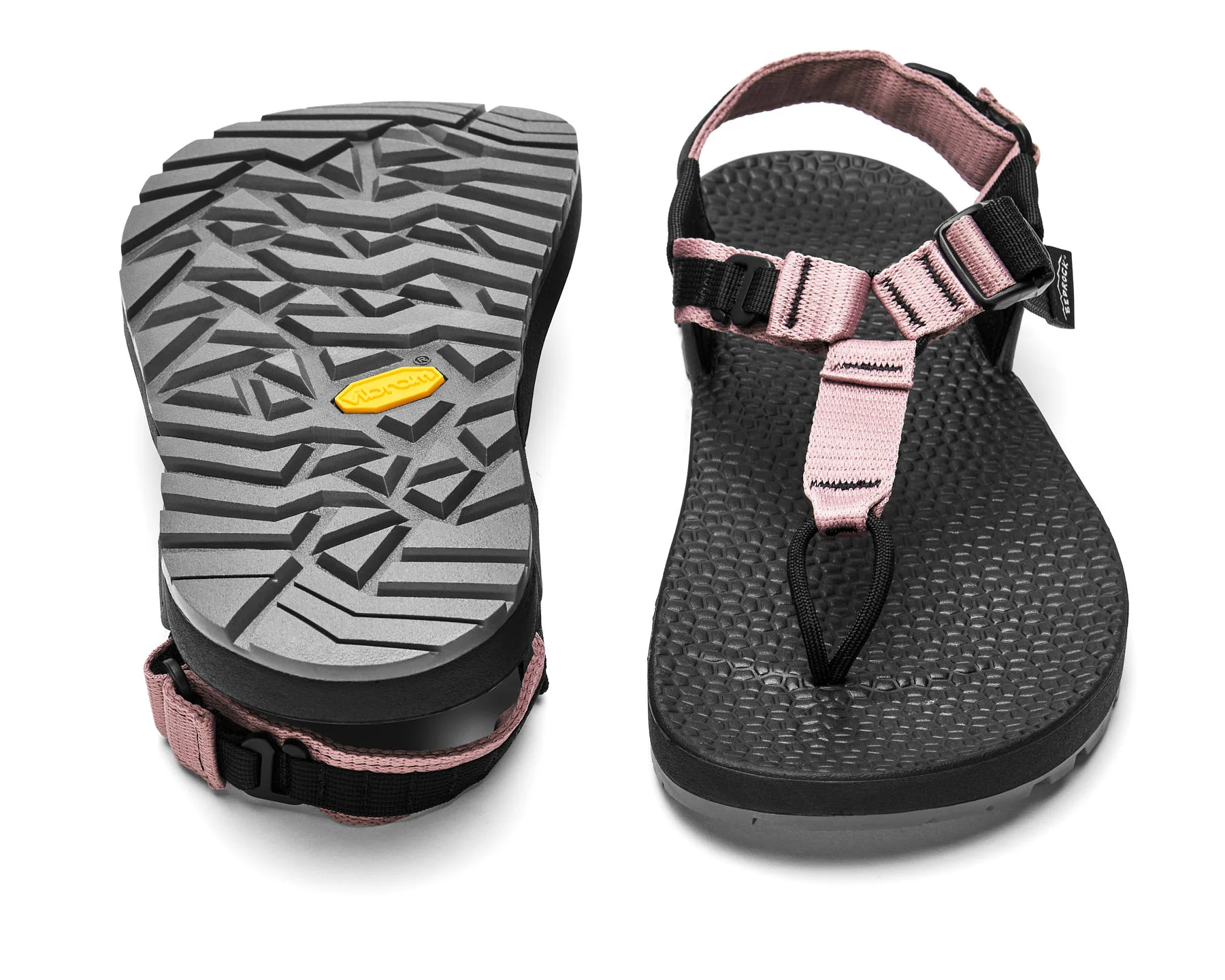

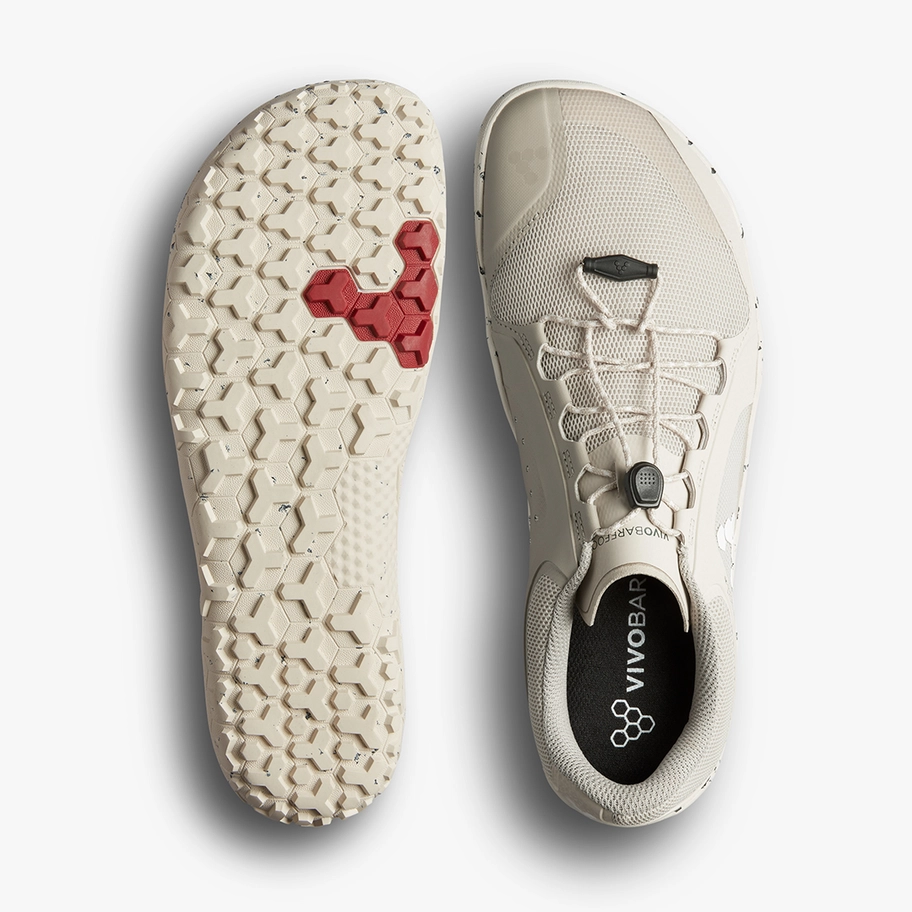


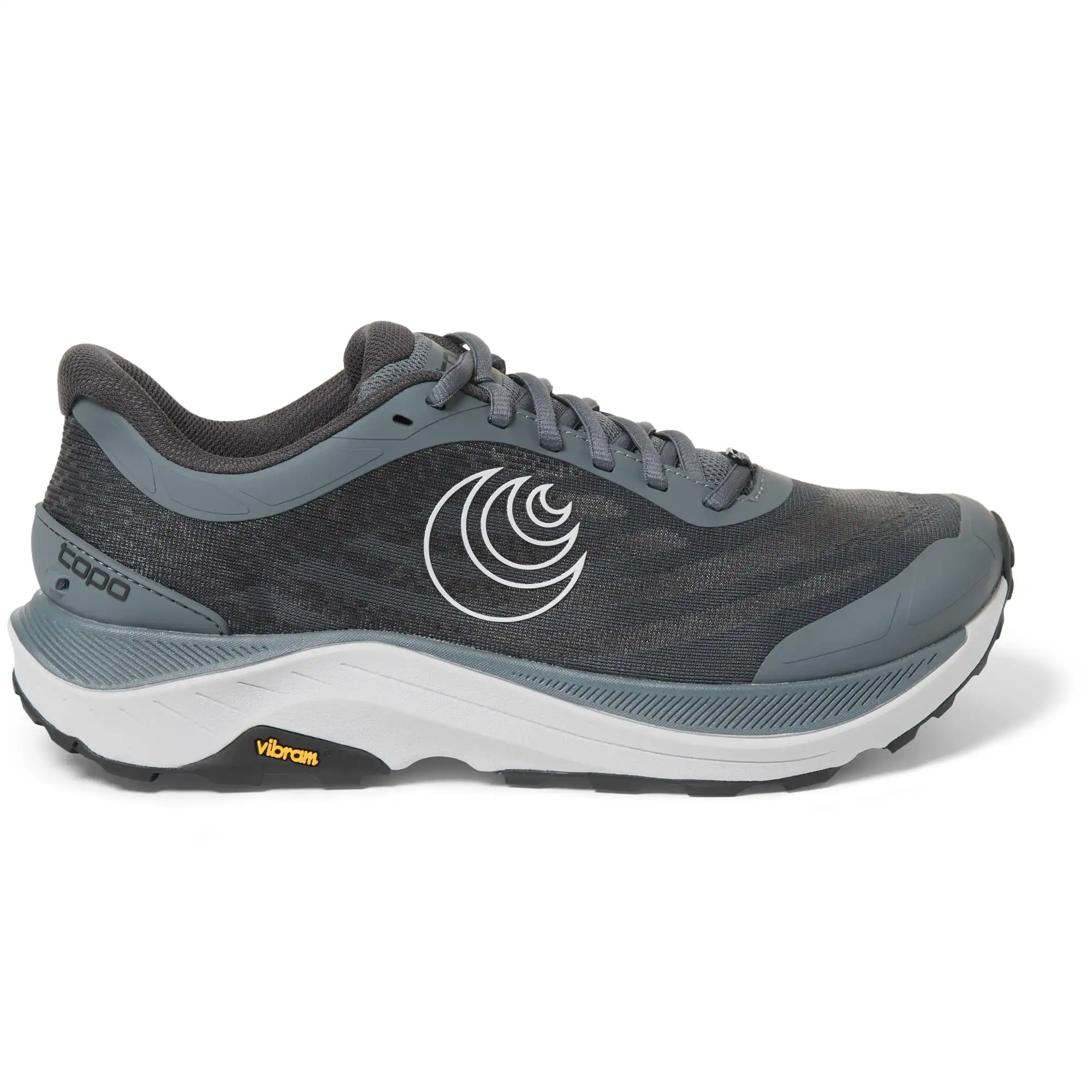


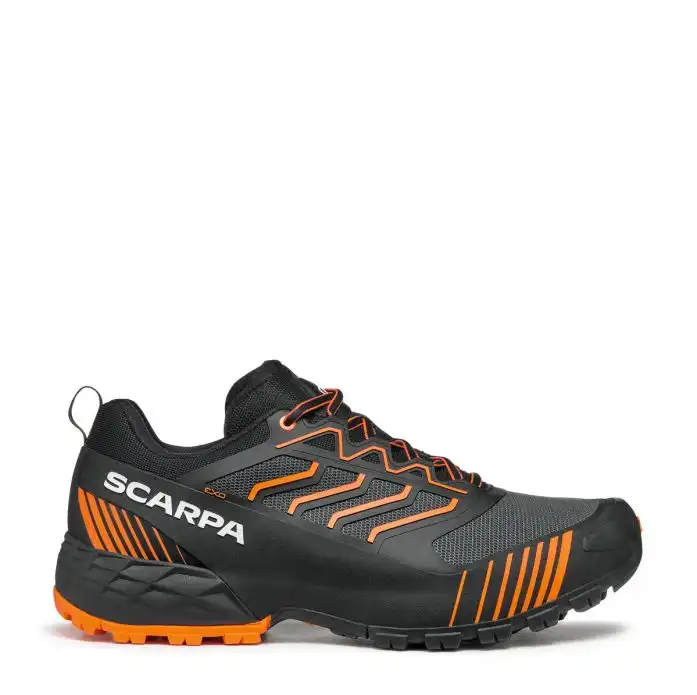












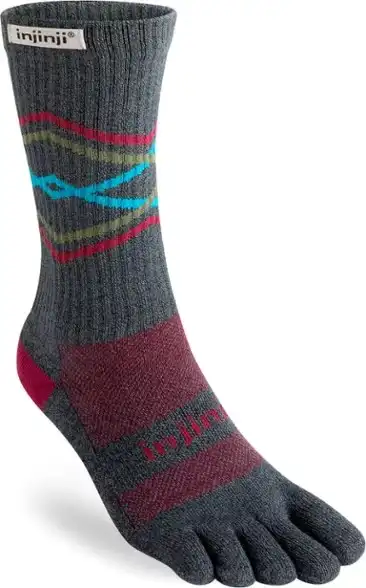





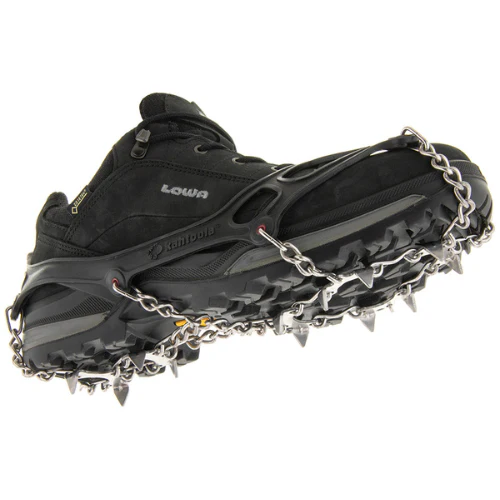


Home › Forums › Minimalist and Backpacking Footwear